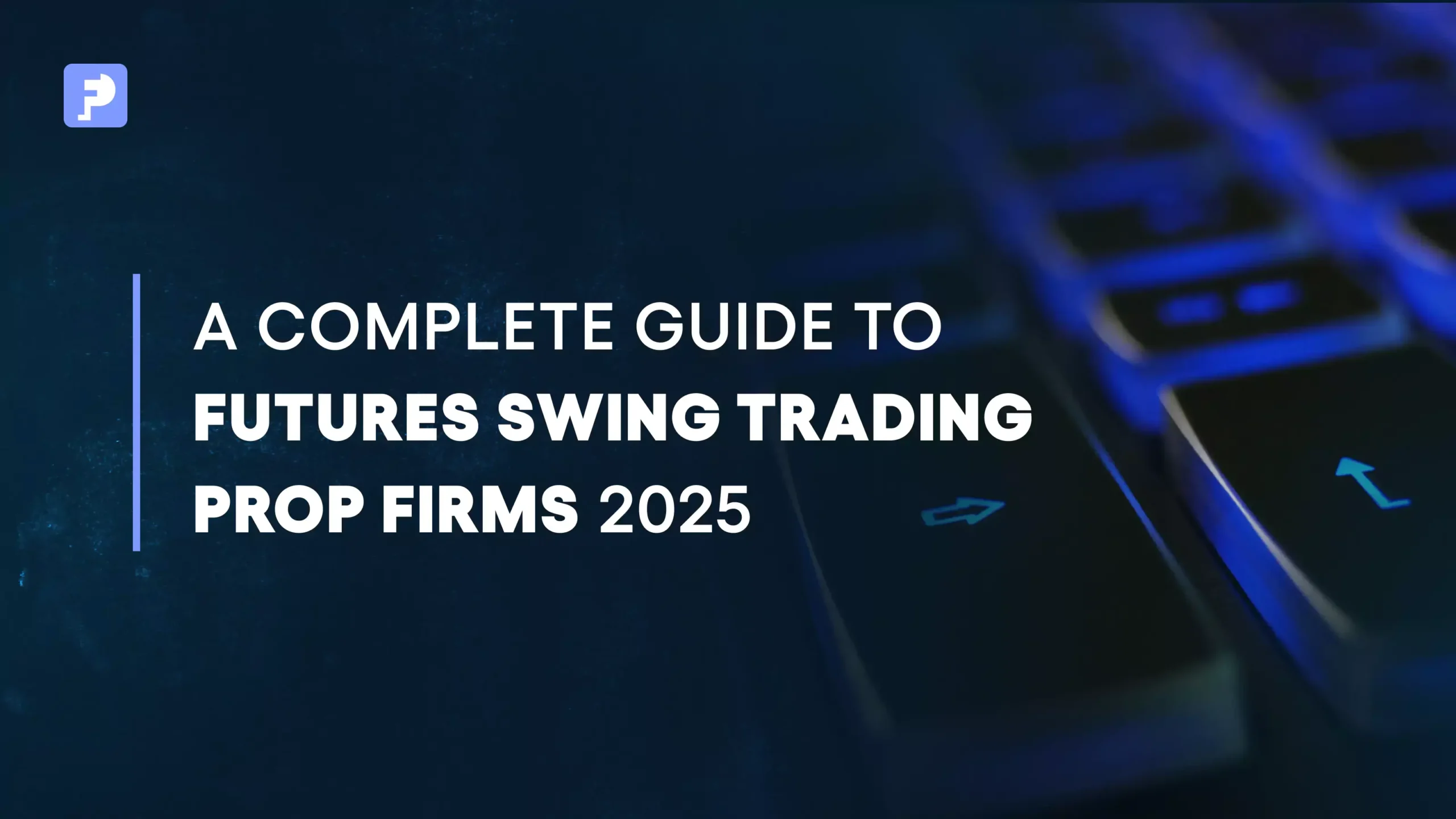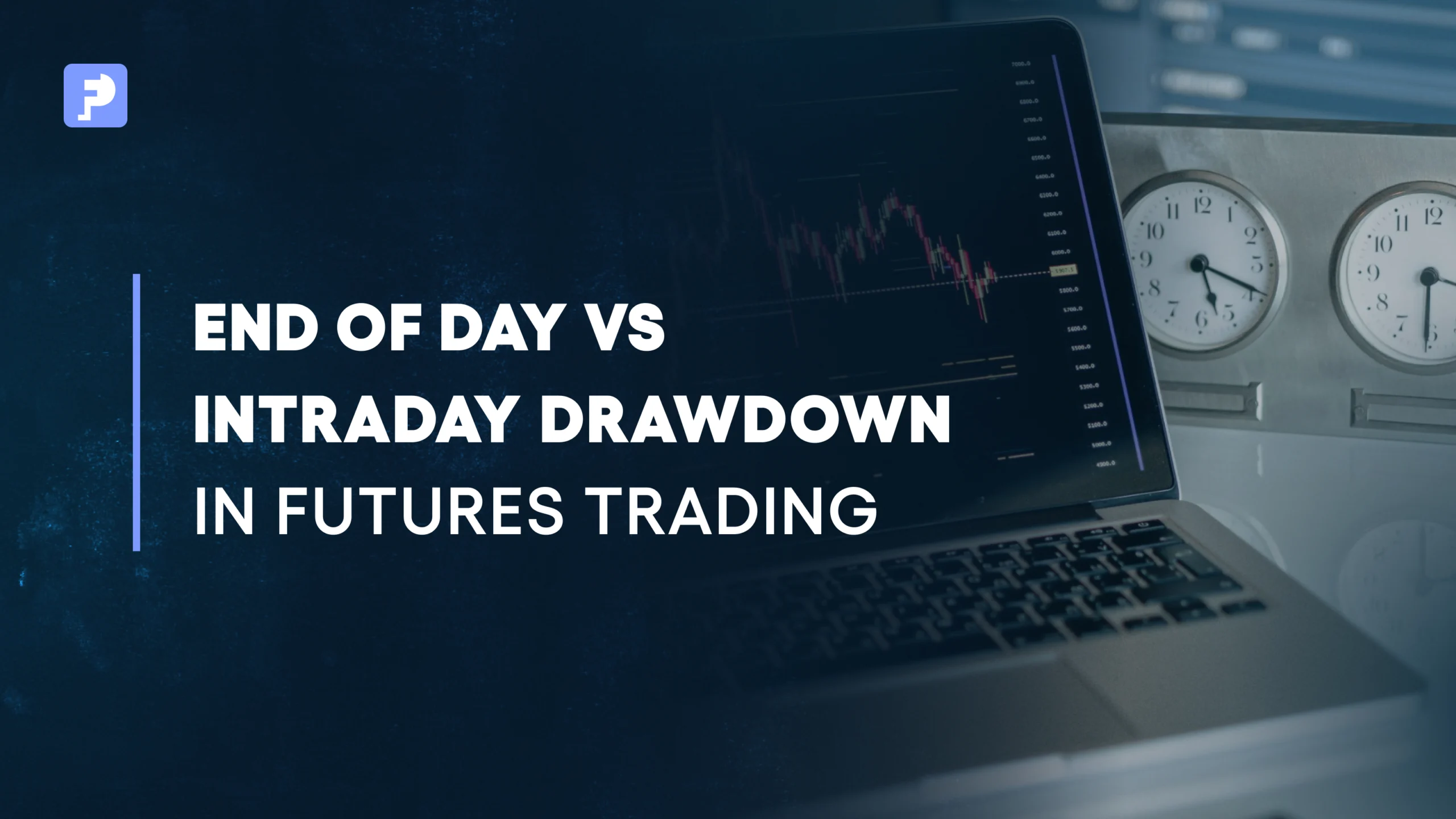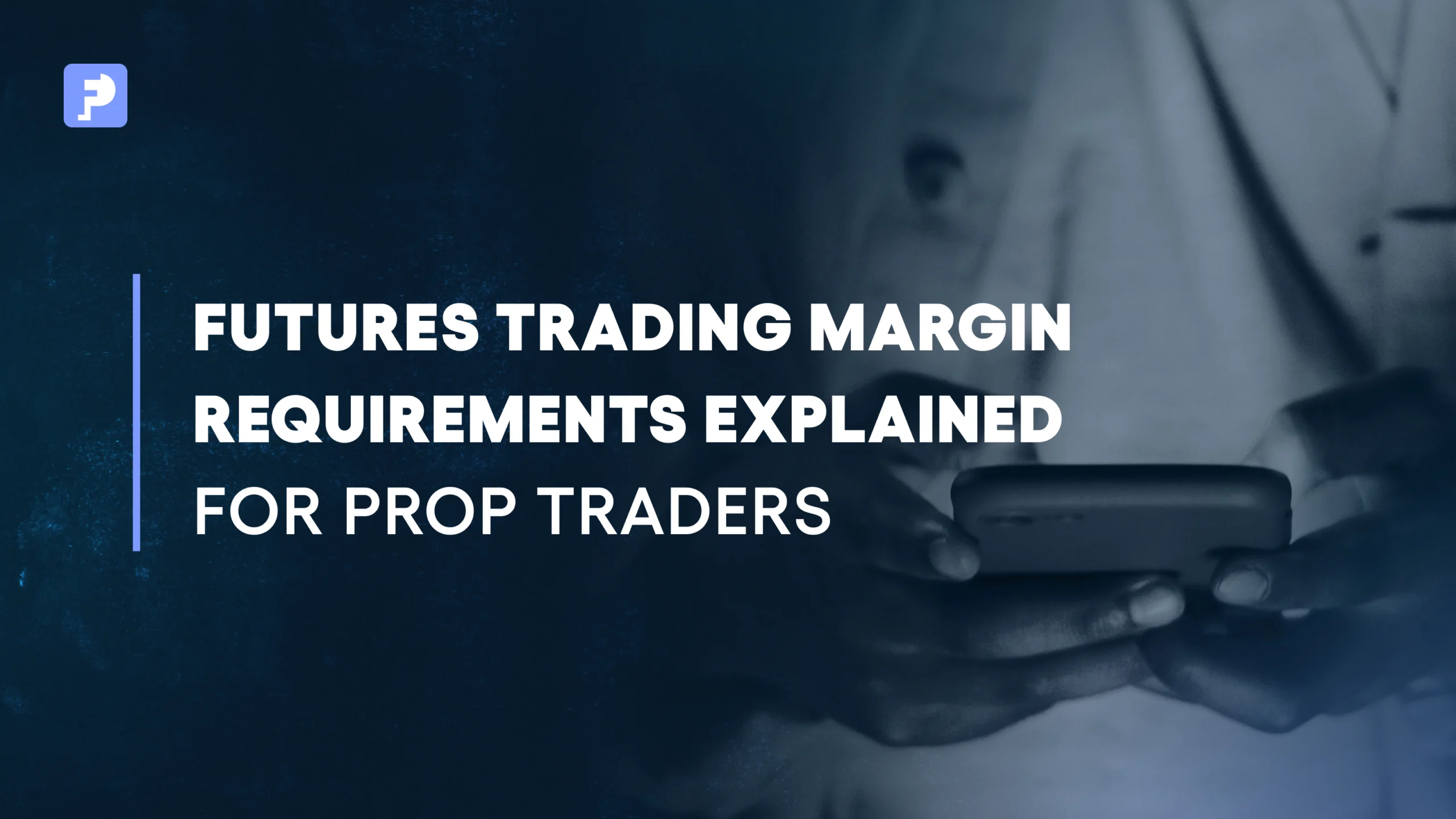
Common Mistakes Traders Make in Funded Futures Accounts
Let’s face it: many traders fall prey to common pitfalls that can quickly deplete their funded account capital. In this article, we will explore prevalent futures trading mistakes, discuss critical prop trading errors, and delve into the funded account risks that every trader must understand to protect their capital.
From overtrading and revenge trading to poor risk management and blatant rule violations, we’ll provide concrete examples, actionable strategies, and high-quality resources to help you avoid these mistakes and achieve long-term success.
Understanding the Landscape: Futures Trading Mistakes
Futures, by nature, is fast-paced. While this offers the potential for high rewards, it also exposes traders to significant risks if they are not disciplined. Futures trading mistakes are not just simple missteps; they can be costly errors that lead to account disqualification, especially in a funded environment where strict rules are enforced by prop firms.
Key Points on Futures Trading Mistakes
- Lack of a Trading Plan: Many traders enter the market without a clearly defined strategy, which makes it easier to succumb to impulsive decisions.
- Mismanagement of Size: Putting too many contracts in one trade can amplify losses. Even a small adverse move can make you lose your account.
- Inadequate Risk Management: Not setting proper stop-loss orders or risking too high a percentage of the account on a single trade can quickly wipe out capital.
For further reading on the basics of risk management in trading, read our guide on risk management and prop trading accounts.
Prop Trading Errors: Why Following Firm Rules is Crucial
Prop firms typically offer funded accounts to traders who meet strict criteria. However, many traders fall into the trap of prop trading errors by not adhering to the firm’s specific rules. Whether it’s due to a misunderstanding of guidelines or sheer overconfidence, breaking these rules can lead to instant disqualification.
Common Prop Trading Errors
- Ignoring Account Limits: Every prop firm sets specific rules on maximum drawdowns, position sizes, and daily loss limits. Disregarding these can result in immediate termination of your funded account.
- Failure to Adjust to Market Conditions: Markets are dynamic, and a strategy that worked yesterday might not work today. Prop firms expect traders to adapt and follow their risk parameters accordingly.
- Overcomplicating Strategies: Sometimes, traders overcomplicate their approach, leading to confusion and misinterpretation of market signals. Simple, rule-based strategies often perform better in a structured environment.
For a deeper dive, read our step-by-step guide on how to pass your futures evaluation.
Funded Account Risks: The High Stakes of Trading with Capital You Don’t Own
Managing a funded account comes with its own set of funded account risks that differ from trading with your own money. Prop firms not only provide capital but also enforce rigorous guidelines to protect that capital. Failing to manage these risks can lead to both financial loss and loss of privileges.
Identifying Funded Account Risks
- Strict Monitoring: Funded accounts are continuously monitored for compliance with rules, meaning even a small mistake can lead to disqualification.
- Psychological Pressure: Trading with other people’s money can create additional pressure, often leading to stress-induced errors. Even worse, it might lead you to take more risks because you don’t care, it’s not your money after all.
- Performance Benchmarks: Prop firms set performance benchmarks that traders must meet consistently. Falling short of these benchmarks can result in account closure.
Overtrading and Revenge Trading: Avoiding the Pitfalls
Overtrading
Overtrading is one of the most dangerous behaviors in futures. Driven by the fear of missing out or the urge to recover losses, traders often take too many trades, leading to high transaction costs, increased exposure, and ultimately, diminished returns and losses.
Example of Overtrading: Consider a trader who, after a series of losses, begins to execute multiple trades in rapid succession in an attempt to recoup. This not only increases transaction costs but also leads to poor decision-making due to emotional exhaustion. In a funded account, where risk limits are stringent, such overtrading can quickly breach the firm’s max allowed drawdown.
Tip: Set a daily trade limit and adhere strictly to it. Use a trading journal to monitor and review each trade to understand whether you are entering the market too frequently.
Emotional Trading
Closely related to overtrading is emotional trading. When traders allow their feelings—fear, greed, or frustration—to guide their decisions, they are more likely to make impulsive trades that deviate from their plan. This often leads to revenge trading, where a trader attempts to win back losses through high-risk trades.
Example of Emotional Trading: Imagine a scenario where a trader experiences a significant loss due to a market reversal. In a state of panic and driven by the desire to “get even,” they initiate a series of high-risk trades without proper analysis. This kind of emotional reaction often leads to even larger losses and can result in disqualification from a funded account.
Tip: Develop a pre-trade checklist and stick to your trading plan regardless of recent losses or gains. Techniques like mindfulness and regular breaks can help in managing emotions effectively.
Rule Violations
Rule violations are another critical area where many traders falter. In the context of funded accounts, prop firms have strict guidelines regarding risk management, trade size, and overall strategy. Violating these rules, even inadvertently, can lead to immediate disqualification.
Example of Rule Violations: A trader might be tempted to ignore the maximum drawdown limits set by the prop firm in an attempt to capture a high-reward trade. If the trade doesn’t go your way, you lose your account. It’s essential to internalize all the rules provided by the firm and integrate them into your trading strategy.
Tip: Regularly review the rules and guidelines provided by your prop firm and make them a part of your checklist before every session.
Detailed Exploration of Common Mistakes
1. Failing to Stick to a Trading Plan
One of the foundational futures trading mistakes is entering a position without a well-defined plan. A plan should include your entry and exit criteria, risk management strategies, and performance benchmarks. Without a clear plan, traders are prone to making impulsive decisions that often result in significant losses.
Concrete Example: A trader interested in crude oil futures might set an objective to earn a 5% return over the next month. However, if they do not establish clear entry points (e.g. a break above a key resistance level) and exit points (e.g. a predetermined profit target or stop-loss), they may end up chasing the market and making trades based on gut feelings rather than logic. This is a classic example of prop trading errors that can quickly lead to funded account loss.
Best Practice: Develop and adhere to a comprehensive trading plan. Regularly review your performance and adjust your plan based on market conditions. Tools like Trading Journals or apps can be helpful in tracking your performance. Even a simple excel sheet can make the difference.
2. Mismanagement of Leverage
Futures contracts are tricky. If you put too many contracts in a trade, the movement per tick can cause significant losses. Many traders make the mistake of using too many contracts without fully understanding the potential downside, leading to severe drawdowns.
Concrete Example: Imagine a trader who uses 10 Micro NQ contracts on a $50,000 funded account. If the NASDAQ 100 index moves 25 points against the trader’s position, they lose $500, which is 1% of the account. With a max drawdown of 4% it takes just 100 points to wipe out an account.
Best Practice: Only use a number of contracts that aligns with your risk tolerance and strategy. Educate yourself on margin requirements and regularly monitor your account to ensure you are within safe limits.
3. Poor Risk Management
Poor risk management is a prevalent issue among traders managing funded accounts. Failing to implement robust risk controls—such as stop-loss orders, proper position sizing, and adherence to risk-reward ratios—can lead to catastrophic losses and disqualification from the prop trading program.
Concrete Example: Consider a scenario where a trader risks 5% of their account on a single trade, far exceeding the typical recommended risk per trade of 1-2%. Even a minor unfavorable price movement can result in a loss large enough to breach the firm’s risk limits, leading to disqualification.
Best Practice: Implement strict risk management protocols. Limit risk per trade to a small percentage of your total account, and always use stop-loss orders to cap potential losses. Review your risk management strategy regularly to ensure it aligns with market conditions and firm requirements.
4. Overtrading and Revenge Trading
As discussed in the above, overtrading and revenge trading are significant pitfalls that can devastate your funded account. Overtrading occurs when traders make excessive trades, often due to impulsive behavior or an emotional need to recover losses. Revenge trading is a specific form of emotional trading where traders attempt to recoup losses quickly, often resulting in even greater losses.
Concrete Example: A trader who loses a significant portion of their account due to an unexpected market reversal might, in a bid to recover quickly, start taking impulsive trades with higher risk. This approach not only ignores the importance of discipline but also directly violates the risk management rules set by the prop firm—leading to severe prop trading errors and increased funded account risks.
Best Practice: Avoid the temptation to “chase losses.” Stick to your plan and risk management rules, even in the face of setbacks. Consider taking a break after a series of losses to clear your mind and avoid emotional decision-making.
5. Not Following Prop Firm Rules
Every prop firm has a specific set of rules designed to protect the firm’s capital and ensure sustainable practices. Ignoring or misunderstanding these rules is one of the most common prop trading errors that can result in the loss of your funded account.
Concrete Example: A trader might ignore the daily loss limit set by the firm in hopes of making a big comeback trade. Even if that trade turns out profitable, breaking the firm’s rules can result in an immediate disqualification. Rule violations in a funded account are taken very seriously by prop firms, as they jeopardize the entire program.
Best Practice: Familiarize yourself with every rule and guideline provided by your prop firm. Make it a habit to review these rules before every trading session. Implement internal checklists that ensure you remain compliant with all regulations.
6. Failure to Adapt to Market Conditions
Markets are dynamic and ever-changing. A trading strategy that worked well under one set of conditions may fail under another. Many traders make the mistake of sticking rigidly to a strategy without adapting to current market trends, leading to avoidable futures trading mistakes.
Concrete Example: A trader who uses a strategy based solely on technical indicators might find that their approach fails during periods of high volatility or during major economic announcements. Without the flexibility to adjust, the trader may incur significant losses, thus increasing their funded account risks.
Best Practice: Stay informed about market trends and economic events. Regularly backtest and adjust your strategy to ensure it remains effective under different market conditions. Utilizing economic calendars and news alerts can help you stay ahead of market shifts.
Integrating Lessons into Your Trading Routine
Successful funded futures trading requires not only understanding and avoiding common mistakes but also developing habits that reinforce discipline and risk management.
Create a Routine
Develop a daily routine that includes pre-market analysis, setting clear objectives, and reviewing market conditions. A routine helps in minimizing futures trading mistakes and keeps you aligned with your trading plan.
Use Technology and Tools
Leverage platforms that offer robust risk management tools, real-time analytics, and backtesting capabilities.
Continuous Self-Assessment
Look back at your trading journal to identify mistakes you often make. If you notice patterns of prop trading errors or repeated instances of funded account risks, adjust your strategy accordingly. Learning from past mistakes is critical in a competitive environment.
Education and Community
Join communities or forums where you can share experiences and learn from other funded traders. Engaging with a community can provide moral support and practical advice on avoiding common pitfalls like overtrading, emotional trading, and rule violations.
Conclusion
Avoiding common mistakes in funded futures trading is not only about safeguarding your account—it’s about building a sustainable, disciplined career. By understanding the specific pitfalls associated with futures trading mistakes, prop trading errors, and funded account risks, you equip yourself with the knowledge and strategies necessary to succeed in a challenging market environment.
Remember, every mistake is a learning opportunity. Whether it’s the impulse to overtrade, the lure of revenge trading, or the inadvertent violation of prop firm rules, each error teaches a valuable lesson about the importance of planning, risk management, and discipline.
By avoiding these common mistakes and following the best practices outlined above, you can significantly reduce futures trading mistakes, avoid prop trading errors, and mitigate funded account risks—paving the way for a successful career in the futures market.



